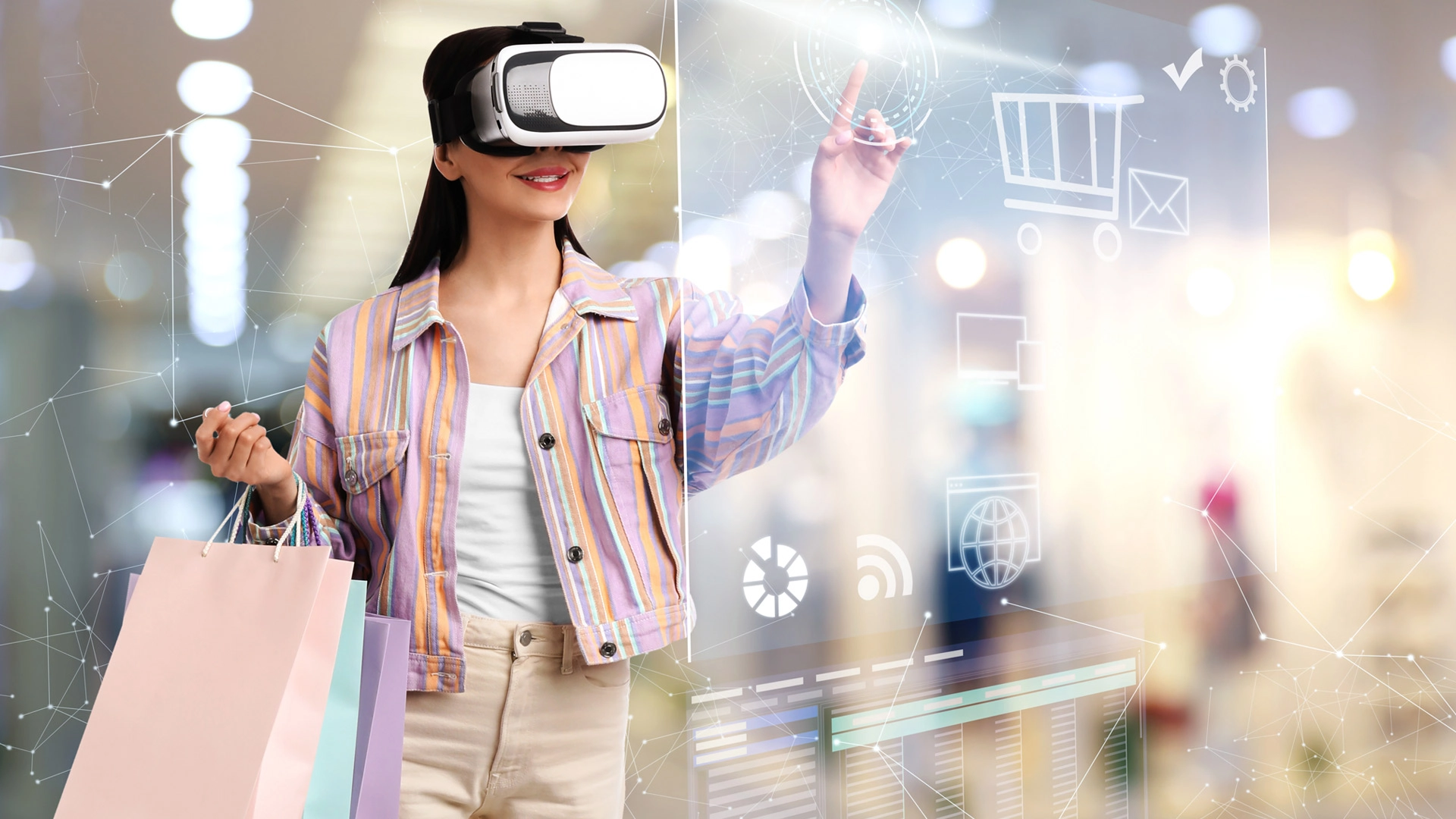Virtual reality and augmented reality have come to mean something totally different from entertainment or gaming today. They are knocking on the doors of retail and changing shopping as it has been understood for ages.
One of the clear promises made by either virtual reality shopping or AR-enabled experiences is dramatically transforming how customers engage with a product or a place. While retailers worldwide are indeed bringing a few of these trends, defining the phenomena they are creating and implementing will serve as an avenue for consumers to get their share of these innovative experiences while boosting sales. So, just what are AR and VR shopping, and how would retailers be able to use them? Let’s get it.
What Is AR and VR Shopping?
AR and VR shopping can be used to characterize shopping as enabled by immersive technologies such as virtual reality (VR) and augmented reality (AR).
- Shopping in virtual reality (VR): It lets customers wear a VR headset to explore a virtual store. They can walk around, interact with products, and experience a 3D environment, all from the comfort of their home.
- Augmented Reality (AR): It superimposes the true world with parts of the digital world so that the consumer can experience a new reality through a mobile or tablet device. Augmented Reality allows the individual to visualize, for example, how furniture would look in his living room or how a certain lipstick shade would complement the skin tone.
Advantages of AR and VR Shopping for Retailers
- Enhanced Engagement with Customers: Such experiences unite customers into the realm of real shopping. It keeps them glued for long hours compared to traditional online shopping platforms.
- Better Product Visualization: Such as reading and sifting through all existing products while virtually trying them on, along with smart buying, which essentially cuts return rates.
- Personalization: Both AR and VR are up close when talking about personalized recommendations that allow customers to see products suiting their preferences.
- Increased Accessibility: For instance, we have VR shopping that literally removes the border. It lets you shop anywhere in the world.
- Increased Emotional Affinity: That much better will be the emotional affinity between the two parties if an AR/VR experience is unique and will have a lasting impression on the retail consumer.
How can retailers prepare for AR and VR shopping?
AR and VR don’t have to be scary for retailers. Here is a small introduction to how retailers can join the trend:
1. Knowing your audience:
Understanding the customer before he puts any AR or VR foot in the water will be essential. Is your audience technologically minded? Would they appreciate immersive shopping experiences? Surveys could help you analyze the data and figure out if AR/VR would meet their expectations and needs.
2. Evaluate Technology Options
Determine whether it would be virtual reality or augmented reality that fits best for your company. For example: AR would be most useful for home furnishing and decor brands, enabling customers to visualize the product in their own space. For example, with a fashion brand, VR shopping could involve virtual fitting rooms that customers would realistically try before they buy.
3. Work With Technology Experts
Seek to contract with companies specializing in AR/VR development to build fully integrated and intuitive shopping experiences. They can build apps and VR worlds related to your store, plus integrate them into the digital shopping environment you already have.
4. Create Engaging Content
The most enthralling content draws attention. Create good 3D models, create an interactive experience, and tell a compelling story that makes it memorable. For example, a store in the virtual world could offer customers a virtual tour to explore its product lineup. At the same time, using an AR feature, customers could virtually try on clothes or accessories.
Examples of AR and VR Shopping in the Real World
Numerous retailers use them to create lead time.
- IKEA: An AR app allows users to view furniture in their own rooms and visualize the size.
- Sephora: Sephora’s Virtual Artist app uses AR to allow customer users to try on makeup.
- Nike: Nike allows for a virtual attempt at shoe buying using VR to enhance the educational experience in shopping.
Challenges and Considerations
AR and VR offer potential avenues, but they need some considerations when incorporated into retail.
- Costs: It is expensive to develop an AR/VR solution, which may not suit small entrepreneurs.
- Customer Education: Not everybody is well-versed with technologies, so it’s imperative to educate.
- Technology Limitations: User-friendliness of applications and device compatibility are essential.
Conclusion
AR and VR shopping are changing the retail scenario by giving immersive experiences and involving consumers to merge experiences bordering physical and online shopping. These technologies can help retailers in increasing consumer comfort and sales, as well as give them an edge over competitors.
Meanwhile, if you are a Dubai retailer planning to indulge in AR or virtual reality (VR) shopping, you can think of collaborating with Limina Studios. We offer state-of-the-art AR and VR solutions to keep businesses thriving in the digital age.























